






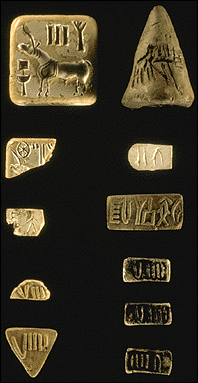

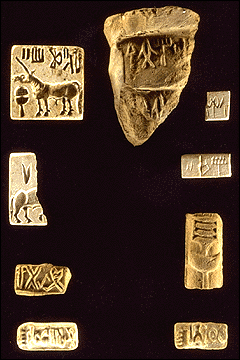

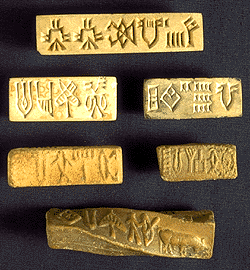

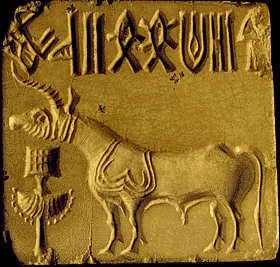

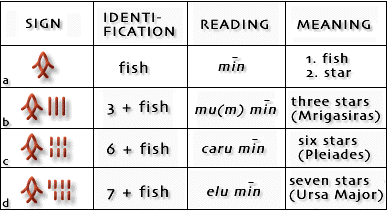






The fragments of pottery are about 5,500 years old (add below picture 'script') Exclusive by BBC News Online Science Editor Dr David Whitehouse The first known examples of writing may have been unearthed at an archaeological dig in Pakistan. So-called 'plant-like' and 'trident-shaped' markings have been found on fragments of pottery dating back 5500 years.
Dr Richard Meadow of Harvard University: "We may be able to follow the history of signs." They were found at a site called Harappa in the region where the great Harappan or Indus civilisation flourished four and a half thousand years ago. Harappa was originally a small settlement in 3500 BC but by 2600 BC it had developed into a major urban centre.
Harappa was occupied until about 1900 BC. The earliest known writing was etched onto jars before and after firing. Experts believe they may have indicated the contents of the jar or be signs associated with a deity. According to Dr Richard Meadow of Harvard University, the director of the Harappa Archaeological Research Project, these primitive inscriptions found on pottery may pre-date all other known writing. Last year it was suggested that the oldest writing might have come from Egypt.
Clay tablets containing primitive words were uncovered in southern Egypt at the tomb of a king named Scorpion. They were carbon-dated to 3300-3200 BC. This is about the same time, or slightly earlier, to the primitive writing developed by the Sumerians of the Mesopotamian civilisation around 3100 BC. "It's a big question as to if we can call what we have found true writing," he told BBC News Online, "but we have found symbols that have similarities to what became Indus script.
Work at Harappa is likely to fuel the debate on early writing "One of our research aims is to find more examples of these ancient symbols and follow them as they changed and became a writing system," he added. One major problem in determining what the symbols mean is that no one understands the Indus language. It was unique and is now dead. Dr Meadow points out that nothing similar to the 'Rosetta Stone' exists for the Harappan text. The Rosetta Stone, housed in the British museum since 1802, is a large slab of black basalt uniquely inscribed with the same text in both Egyptian hieroglyphs and Greek. Its discovery allowed researchers to decipher the ancient Egyptian script for the first time. The Harappan language died out and did not form the basis of other languages.
Dr Meadow: "The earliest inscriptions date back to 3500 BC." "So probably we will never know what the symbols mean," Dr Meadow told BBC News Online from Harappa.
What historians know of the Harappan civilisation makes them unique. Their society did not like great differences between social classes or the display of wealth by rulers. They did not leave behind large monuments or rich graves.
They appear to be a peaceful people who displayed their art in smaller works of stone.
Their society seems to have petered out. Around 1900 BC Harappa and other urban centres started to decline as people left them to move east to what is now India and the Ganges.
This discovery will add to the debate about the origins of the written word.
It probably suggests that writing developed independently in at least three places - Egypt, Mesopotamia and Harappa between 3500 BC and 3100 BC.
